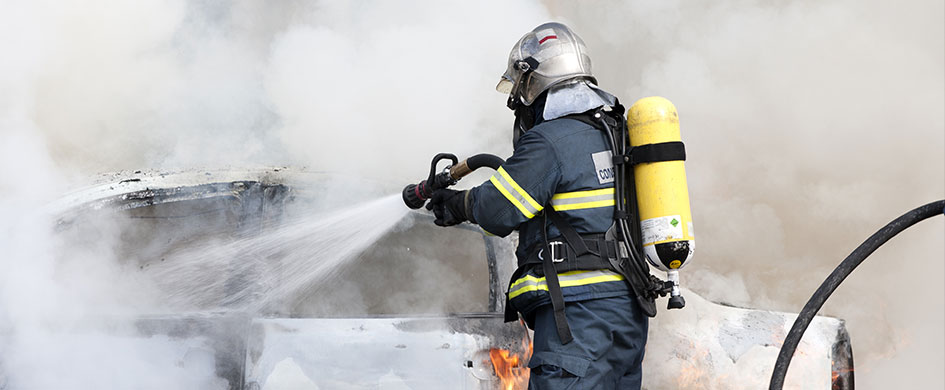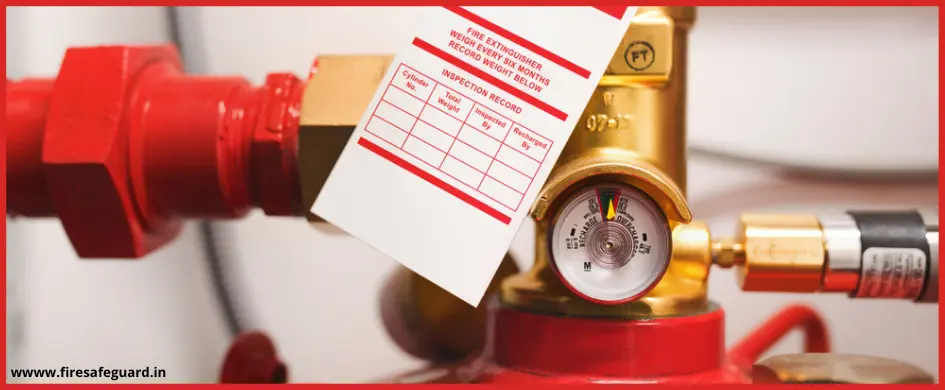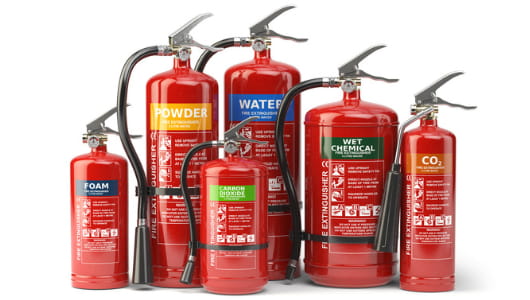Fire is a formidable adversary, capable of causing massive destruction and loss of life in mere minutes. To combat this ever-present threat, firefighters rely on a range of tools and techniques, each designed to suppress and extinguish flames as quickly and efficiently as possible.
One of the most effective weapons in their arsenal is protein foam – a specialized type of firefighting foam that has been used for decades to control and extinguish fires involving flammable liquids and solids.
But what exactly is protein foam, and how does it work? In this article, we’ll explore the science behind protein foam concentrates, delving into their unique composition, mechanism of action, and remarkable effectiveness in fire control technology.
The Composition of Protein Foam Concentrates
At the heart of any protein foam is a complex mixture of proteins, surfactants, and other additives that work together to build a thick, stable foam. The proteins used in these concentrates are typically derived from animal sources, such as hoof and horn meal, feathers, or fish meal. These proteins are carefully selected for their unique properties, which allow them to create a foam that is both durable and effective at suppressing fires.
To transform these raw proteins into usable firefighting foam, they must first undergo a process called hydrolysis. This includes breaking down the proteins into smaller peptides and amino acids, which are incorporated into the foam mixture more easily.
The hydrolyzed proteins are then combined with a variety of surfactants – compounds that help to lower the surface tension of the liquid and allow it to create a stable foam. These surfactants are essential to the effectiveness of protein foam, as they allow the foam to adhere to surfaces and resist breakdown even when exposed to intense heat and flames.
In addition to proteins and surfactants, modern protein foam concentrates often contain a range of other additives designed to enhance their performance and stability. These may include fluorochemical surfactants, which help to improve the foam’s resistance to fuel contamination, as well as polymers and gelling agents that increase the foam’s viscosity and adhesion properties. By carefully selecting and blending these ingredients, manufacturers can create protein foam concentrates that are tailored to specific applications and environments, ensuring optimal effectiveness in the field.
The Mechanism of Action: How Protein Foam Works
So, how exactly does protein foam work to control and extinguish fires? The answer hides behind in its unique mechanism of action, which relies on a combination of physical and chemical properties to smother flames and prevent re-ignition.
When protein foam is applied to a fire, it immediately begins to create a thick, stable blanket over the surface of the burning material. This foam barrier serves two critical functions.
- First, it physically separates the fuel source from the oxygen in the air, effectively smothering the flames and preventing them from accessing the oxygen they need to continue burning.
- Second, the foam acts as a heat sink, absorbing thermal energy from the fire and reducing its temperature. This cooling effect is crucial, as it helps to prevent the fire from spreading and reduces the risk of re-ignition.
However, the effectiveness of protein foam goes beyond simply creating a physical barrier and cooling the fire. The unique chemical properties of the foam also play a vital role in its mechanism of action.
- As the foam settles over the surface of the burning material, the proteins and surfactants within it begin to create a thick, adhesive layer that clings to the fuel source.
- This sticky layer helps to prevent the foam from sliding off or being blown away by the intense heat and gases generated by the fire, ensuring that it remains in place to continue suppressing the flames.
- Furthermore, the foam’s ability to penetrate and fill crevices and gaps in the burning material allows it to thoroughly smother even the most stubborn fires.
- By seeping into these hidden spaces and cutting off the fire’s access to oxygen, protein foam can effectively extinguish flames that might otherwise continue to smolder and re-ignite.

The Effectiveness of Protein Foam in Fire Control
The effectiveness of protein foam in fire control is a testament to the incredible science behind protein foam concentrates. For decades, firefighters have relied on this powerful tool to combat a wide range of fires, from flammable liquid spills to solid fuel blazes.
One of the key advantages of protein foam is its remarkable versatility. Unlike other firefighting agents, such as water or dry chemicals, protein foam is effective against both liquid and solid fuel fires.
- When used to combat flammable liquid fires, such as those involving gasoline or oil, the foam creates a dense, stable blanket over the surface of the liquid that prevents the release of flammable vapors and quickly extinguishes the flames.
- Similarly, when applied to solid fuel fires, such as those involving wood, paper, or plastics, the foam penetrates deep into the burning material, smothering the fire and preventing it from spreading.
Another crucial factor in the effectiveness of protein foam is its long-lasting nature.
- While water and other firefighting agents may quickly evaporate or run off, leaving the fuel source exposed and vulnerable to re-ignition, protein foam remains in place for an extended period.
- This allows firefighters to thoroughly douse the flames and ensure that the fire is fully extinguished before moving on to other areas of concern.
However, perhaps the most impressive aspect of protein foam’s effectiveness is its ability to adapt to a wide range of environments and applications.
- Through continuous research and development, manufacturers have created specialized protein foam concentrates that are tailored to specific scenarios, such as aircraft rescue and firefighting (ARFF) operations or marine and offshore environments.
- By fine-tuning the composition of these concentrates, scientists and engineers can ensure that firefighters have access to the most effective tools for the job, no matter the challenge they face.
Advancements and Future Directions
As impressive as the current state of protein foam technology may be, the science behind these concentrates is far from stagnant. Researchers and manufacturers are always pushing the boundaries of what’s possible, developing new formulations and delivery methods that promise to revolutionize the field of fire control.
1) One area of particular interest is the development of environmentally friendly protein foam concentrates. Traditional concentrates often contain fluorochemicals and other additives that can persist in the environment long after the fire has been extinguished, potentially harming wildlife and contaminating water sources.
More Info: To address this concern, some manufacturers are exploring the use of alternative, biodegradable surfactants and additives that can provide the same level of effectiveness without the associated environmental risks.
2) Another exciting avenue of research is the integration of protein foam technology with other firefighting tools and techniques.
For example, some researchers are exploring the potential of combining protein foam with compressed air foam systems (CAFS), which use compressed air to create a highly stable, lightweight foam that can be delivered over long distances. By leveraging the strengths of both technologies, firefighters may be able to achieve even greater effectiveness and efficiency in the field.
Conclusion
The science behind protein foam concentrates is a testament to human ingenuity and the pursuit of more effective tools for fire control. Through a deep understanding of the unique properties of proteins, surfactants, and other key ingredients, researchers and manufacturers have created a powerful weapon in the fight against one of humanity’s oldest and most destructive foes.
As we look to the future, it’s clear that the science behind protein foam will continue to evolve and advance, driven by the tireless efforts of dedicated professionals across a range of fields. By continually pushing the boundaries of what’s possible and exploring new avenues for innovation, we can ensure that firefighters have access to the most effective tools and technologies for protecting lives, property, and the environment.
So the next time you see firefighters battling a blaze with billowing clouds of thick, white foam, take a moment to appreciate the incredible science behind protein foam concentrates. Through the power of chemistry, physics, and engineering, these unassuming mixtures have become indispensable tools in the fight against the ravages of fire.
Read More Articles:
CO2 Fire Suppression System vs Clean Agent fire Suppression
How to choose a water mist fire extinguisher
The Role of Personal Protective Equipment (PPE) in Firefighting
Related Articles

Protein Foam: Your Guide to Effective Fire Suppression

AR-AFFF Foam: Find the Right Formula for Your Needs

AFFF Foam: Your Essential Guide to Fire Safety

Why ECOFOAM is the Future of Environmentally Friendly Firefighting

Foam Concentrates: Sustainable Solutions for Environmentally Conscious Fire Protection

The Right Foam for Every Fire: Synthetic Concentrates for Varied Hazards & Environments

Expansion Foam Concentrate: The Ultimate Solution for Controlling Flammable Liquid Fires
Stop Fire in Its Tracks: Protein Foam's Versatility Across Hazards & Environments

Fluorine-Free Foam (ECOFOAM): Next-Generation Fire Suppression Solutions for Modern Challenges

Future of Firefighting is Here: Top Trends in Foam Concentrate Technology Explained

Synthetic Foam Concentrates: The Science Behind Superior Fire Control

Expansion Foam Concentrate: The Game Changer for Fighting Large Fires

Advantages of Advanced AR-AFFF Foam Technology - Fire Protection Ultimate Guide 2024

AFFF Fire Suppression: Applications & Benefits for Enhanced Safety

Foam Concentrates vs Traditional Fire Extinguishers: Which is More Effective?

Fight Fires Eco-Friendly: Rise & Future of Fluorine-Free Foam (ECOFOAM)

Synthetic Foam Concentrates: Advancing Fire Suppression with Cutting-Edge Technology

Expand Your Fire Safety Arsenal: Exploring the Versatility of Expansion Foam Concentrate

Protein Foam Concentrates: Harnessing Nature's Power for Effective Fire Suppression | Guide 2024

Advanced AR-AFFF Foam: The Cutting-Edge Solution for Superior Fire Suppression Performance

Understanding AFFF Role in Rapid Fire Suppression

The Rise of Eco-Friendly Fire Suppression: Exploring Fluorine Free Foam (ECOFOAM) Solutions

Foam Concentrates: The Ultimate Guide(2024) to Effective Fire Suppression

Choosing the Right Fire Sprinkler System for Your Commercial Property

Emergency Evacuation Planning: Steps to Ensure Workplace Safety

The Ultimate Guide to Fire Extinguishers: Types, Uses, and Maintenance

The Role of Personal Protective Equipment (PPE) in Firefighting

Keeping Your Business Safe: A Comprehensive Guide to Fire Risk Assessments
Protecting Your Electrical Equipment: The Importance of a Fire Suppression System for Electrical Panels

Protect Your Data Center with a Reliable Fire Suppression System

How to choose a water mist fire extinguisher

CO2 Fire Suppression System vs Clean Agent fire Suppression
Ensuring Safety in the Factory: Choosing the Right Fire Fighting Equipment
The Top 5 Places Where Fire Suppression Systems are a Must

How to Choose the Right Fire Safety Equipment for Factories

Difference Between Fire Suppression System and Fire Sprinkler

Ultimate Fire Extinguisher Buying Guide for Business owners

Known and Unknown Facts about Fire Everyone Should Know

Everything you need to know about Water Type Extinguisher

What is a Clean Agent Fire Extinguisher ? Detailed Guide 2024

Everything You Need to Know About Foam-Type Fire Extinguishers

Everything You Need to Know about Dry Chemical Fire Extinguishers - Detailed Guide 2024

Top Fire Extinguisher Manufacturers in India


